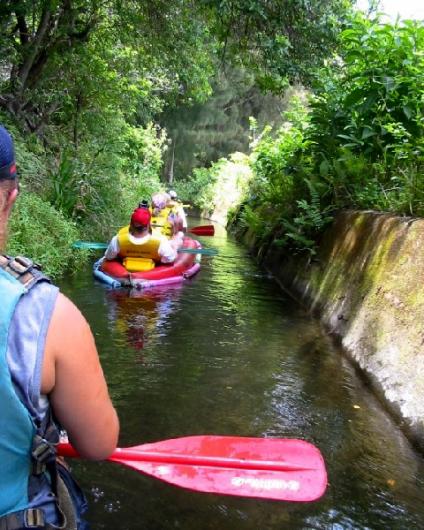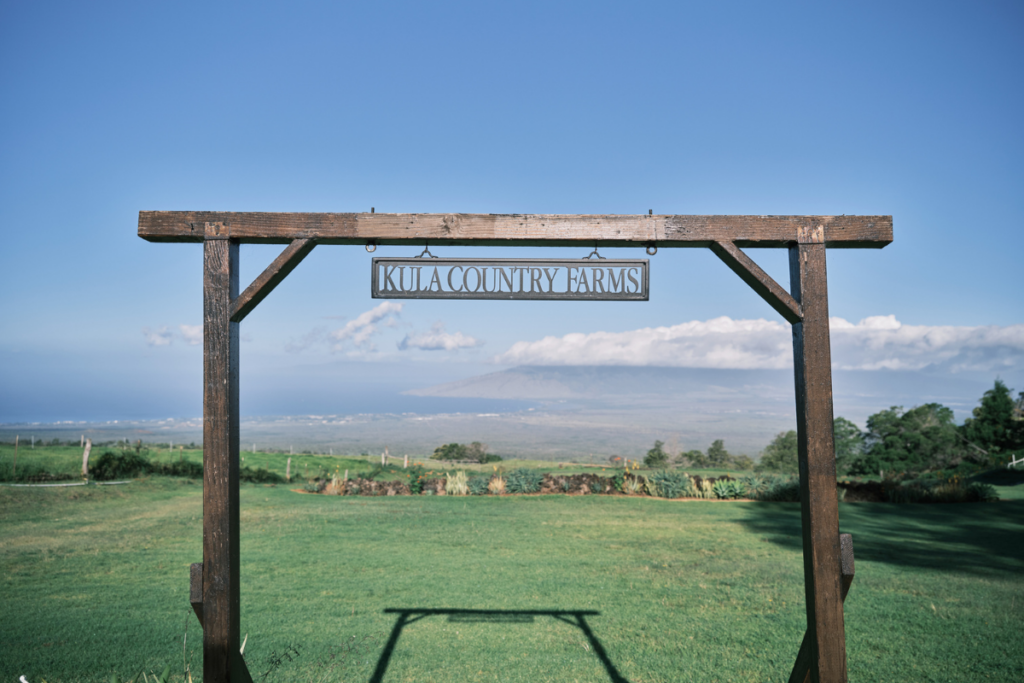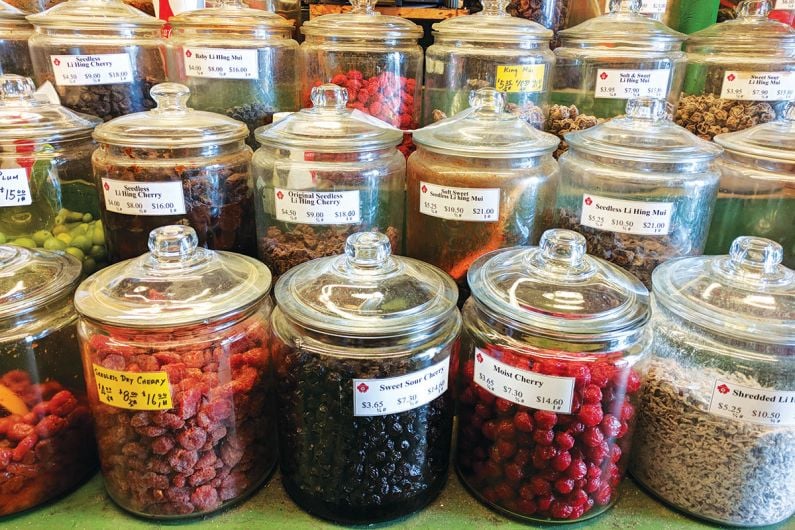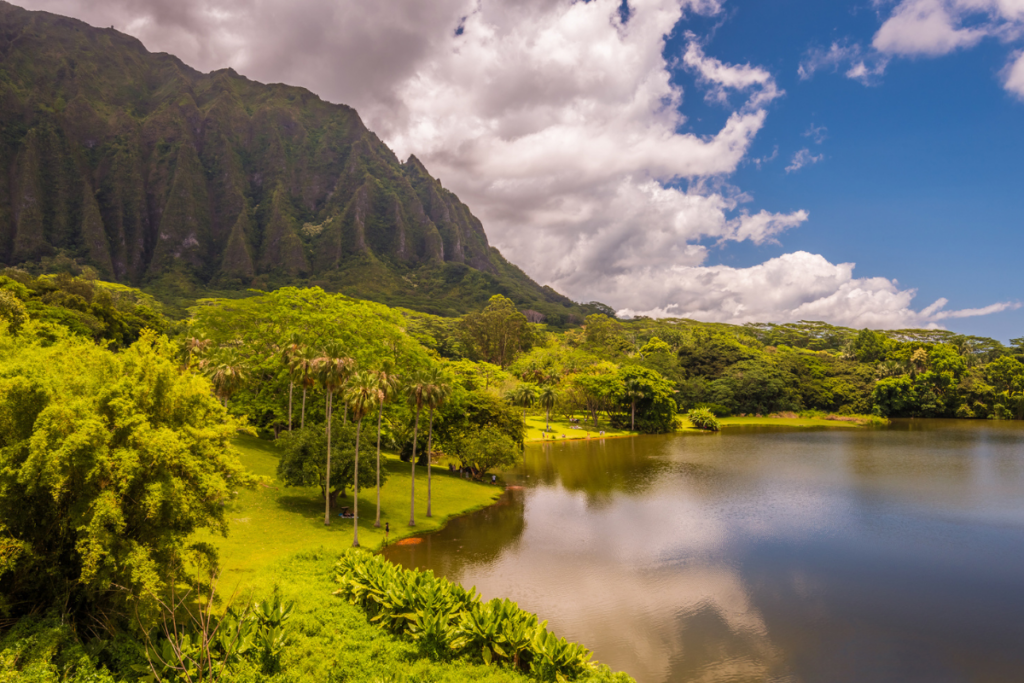What happened to the Big Island of Hawaii’s Flumin’ Da Ditch tour? An update.

For many Big Island of Hawaii visitors, the 14.5-mile-long Kohala Ditch on the island’s northwestern tip conjures memories of the popular floating tour, Flumin’ Da Ditch. HAWAII Magazine readers who fondly remember drifting leisurely by kayak down a four-mile section of the fresh water irrigation system still write us asking about the return of the now-discontinued tour.
To the small towns dotting the North Kohala coastline, however, the ditch was more than kayaks and tours. It was an economic lifeline and historical landmark for an area dependent on the success of its collection of small agribusinesses.
On a sunny Sunday morning in October 2006, everything changed. A pair of earthquakes rocked the Big Island’s South Kohala coast, their shockwaves damaging key sections of the ditch system located in the mountainous regions of North Kohala. In mere seconds, a major source of water to the towns and farms on the coast below was gone.
In HAWAII Magazine’s November/December 2009 print edition feature story “Savin’ the Ditch,” we documented the Big Island community of Hawi’s fight to bring the Kohala Ditch back. Community leaders offered HAWAII Magazine exclusive access to the ditch system, which is largely closed to the public. We explored the intricate network of tunnels and reconstructed flumes. We asked about the future of the Flumin’ Da Ditch tour. And we spoke with the farmers and businesspeople whose lives and livelihood depend on the fresh water the ditch carries. It was an incredible experience.
Here is the story of a community’s remarkable efforts to restore the Kohala Ditch:

A Big Island community fights to keep the Kohala Ditch flowing.
By Chris Bailey
(from the November/December 2009 issue of HAWAII Magazine)
On the morning of Oct. 16, 2006, Bill Shontell, from the Big Island land developer Surety Kohala Co., boarded a helicopter to tour the rugged west branch of Honokane Nut Valley—worried about what he might find.
The helicopter dropped deep into Honokane Nui, hovering 50 feet above the valley floor in a space no wider than six or seven helicopters across. Vibrations from the copter triggered small landslides of now loose rock. The peaceful valley had become a perilous deathtrap.
Surety wanted to see if a pair of earthquakes the day before had damaged the Kohala Ditch system—the primary source of water for the island’s agriculture-rich northwestern peninsula. The quakes, measuring 6.7 and 6.0 on the Richter scale, tore through the entire island, but were based mere miles west of the North Kohala region.
From a safer vantage point of a few hundred feet in the air, Surety’s worst fears were confirmed: Flume No. 1, the manmade channel that connected the main dam intake and headwaters to miles of open ditch, was gone—reduced to splinters from a post-quake landslide. “Just looking at it we could tell the damage was bad,” says Shontell.
Very bad, actually. The Kohala Ditch was severed from its source. Water shut off like a faucet.
Farms and businesses that relied on the steady flow of water were instantly hit. A few businesses, such as Flumin’ Da Ditch—an ecotour company that offered a floating tour of a 4-mile stretch of the ditch to thousands of visitors each year—shut down immediately.
Making matters worse, the extensive trail system that connected Flume No. 1 and the upper stretches of the ditch to the neighboring regions was either buried under tons of debris or sheared right off the mountainside, making a topographically perilous area even more volatile. It was almost impossible to even analyze the extent of the damage.
“We knew we were in for the long haul, but we wouldn’t know how bad it was for months,” says Steve Bowles, a principal coordinator for the Kohala Ditch Project Steering Committee.
Built in 1905 and 1906, the Kohala Ditch is an engineering feat, an intricate system of open ditches, cavernous tunnels, flumes, dams and reservoirs spanning 14.5 miles, snaking through valleys, mountains and open pasture, all designed to supply water to the area’s then-burgeoning sugar industry.
More than 600 Japanese laborers worked day and night under treacherous conditions. The men drilled through solid rock, blasted tunnels into miles of mountain and built dozens of concrete and wood flumes. Seventeen died in the 18 months of construction.
Prior to the earthquake, the ditch still carried 8 million to 10 million gallons of water per day to areas all across North Kohala—feeding the rural towns of Hawi, Kapaau and Hikapoloa.

Without water, farmers in these agriculture-heavy areas were in a panic.
“It was a total disaster,” said Ed Boteilho, owner of Cloverleaf Dairy, one of two remaining dairies in Hawaii, and one of the biggest users of water from the ditch.
A well installed by Surety Kohala just days before the quake became the life support for Cloverleaf and 27 other farms in the area. Nearly 500,000 gallons of water were pumped daily—Cloverleaf alone needed 100,000 gallons to operate its dairy and sustain its 800 cows. The water levels were nowhere near their pre-quake state, but the well water bought farmers time.
Where would the money come from to fund the massive repairs needed on the ditch? The ditch was privately owned, leaving it ineligible for federal and state funs from FEMA or the Hawaii state Department of Agriculture.
Hopes faded. “You saw it in the faces of some of the old-timers in the community,” says Rory Flynn, facilitator for the Kohala Ditch Project Steering Committee. “They knew what a complicated system this was. They knew how challenging restoring it would be. They thought we’d never raise the money. And you can see the sadness. ‘What are we going to do without the ditch?’ they asked.”
The community did not stand idle for long. Residents met to discuss how money could be raised, planting the seed for the Kohala Ditch Project Steering Committee. The only way to save the ditch, the group concluded, would be through the role of agriculture in the area.
The group aligned with a local nonprofit organization, the North Kohala Community Resource Center, and began exploring every option. The committee raised more than $4.5 million in public and private monies, including $2 million in federal funds, thanks to the efforts of U.S. Sen. Daniel Inouye. Hawaii state Civil Defense provided fiscal oversight for the public repair funds and contributed to the operating costs of the interim pumping project.
As construction began, the only way to get to Flume No. 1 would be through the ditch itself. The dried-out tunnel system, opening up 4 miles below Flume No. 1, served as an access point for workers and equipment. However, the tunnels in the upper parts of the valley were blocked by landslide debris.
Contractors undertook the grueling work of clearing out the dark, dingy caverns. Traversing through miles of tunnel on ATVs, workers slowly chipped away at the blockage.
“It was an eye-opening experience,” said Shontell. And a history lesson. Many of the men had lived in North Kohala all their lives, but never realized how much effort had gone into its construction at the turn of the last century. The lack of space in the narrow tunnel network forced workers to use methods and equipment similar to those of the original ditch laborers.

Once access into the backcountry was gained, restoration of Flume No. 1 was in full swing. An aluminum pipe four feet in diameter—shipped from California and brought into the valley by helicopter—replaced the destroyed wooden flume. Several flumes further along the system were rebuilt or reinforced.
Volunteer crews spent hundreds of hours clearing away Christmas berry shrubs, guava trees and trash that accumulated in the ditch along the lower parts of the system. To raise money and awareness, the Kohala Ditch Steering Committee printed thousands of T-shirts with slogans like “Save the Ditch” and “Got Water?”
Petitions were circulated to drum up public support. Some of the comments were blunt: “My employment depends on ditch repairs,” wrote Cloverleaf Dairy workers.
“It’s exciting to see the community come together,” says Bowles. He sees a silver lining to the ordeal, the uniting of the people of North Kohala, reminiscent of the tight-knit communities of generations past. “It’s like we’re going back in time.”
It seemed like major ditch repairs were completed in the fall of 2008, with the return of a steady flow of water. Still, not all of the restored ditch water was arriving at Cloverleaf Dairy and the other businesses in the lower parts of Hawi and Hoea. The reason? Seepage. The fine sediment, which had lined the ditch floor and created a watertight seal, dried to dust after the earthquake. As much as 3 million to 6 million gallons of water now seeped into the earth every day. To remedy this, a 12-inch-wide pipeline was installed to help channel the water. It’s a temporary solution while other options—including lining the ditch with a concrete or plastic barrier—are being evaluated.

The transfer was almost inevitable. “Surety isn’t in the ditch business,” adds Flynn. “It is in the land-development business.”
The ditch was also too important to leave to the financial resources of a single company. “The ditch is a black hole for us,” says Shontell. Even before the quake, Surety was charging water users less than it cost to maintain the ditch. “We’ve basically subsidized the lifestyle for farmers of the district for the last 20 years.”
While the legalities of the transition are complicated, trustees have been selected and legal counsel hired to aid in the process. Surety Kohala aims to have a secondary role in the Kohala Ditch.
“It’s a great opportunity for the community to acquire something that was previously in private hands,” says Shontell.

Of course, taking over the Kohala Ditch will be a responsibility. Moving forward, the fledgling nonprofit is concerned with finding a steady stream of revenue so it can maintain the ditch.
One potential source of money is ecotourism. Flumin’ Da Ditch was a major source for ditch maintenance and an economic boon for the area. In its heyday, the ride accommodated as many as 22,000 visitors a year.
In an ironic twist, the last remnant of Flumin’ Dat Ditch’s parent company Kamuela Kayak Co.—a van that once ferried guests to the Flumin’ Da Ditch ride—was purchased in a post-bankruptcy fire sale by Surety Kohala. It now hauls Surety workers to the ditch site.
A few individuals have shown interest in restarting the tours, says Flynn. Unfortunately, bringing the ride back isn’t as simple as purchasing a couple of kayaks. Further geological surveys must be conducted, and legal hurdles cleared. At this point it’s too early to tell when and if the Flumin’ operation will return.
“To recreate that experience would be neat, but none of this will work if we don’t make the ditch work for agriculture,” says Flynn.
The group is mainly focused on keeping North Kohala an agriculturally viable part of the Big Island. The Kohala Ditch Steering Committee has supported the development of the Hoea Agricultural Park—a verdant 500-acre stretch of land that will provide space for farmers to grow crops and raise livestock without the large overhead of doing it independently.
Lance Caspary has become the poster boy for the new agriculture park, the first of hopefully many local farmers who will utilize the acreage. His Kohala Crawfish Farm once specialized in raising prawns and crawfish, as well as other items that required a constant flow of water to thrive, including ornamental fish and taro.

Caspary’s business became an instant casualty of the earthquake. At the time of the quake he raised about 60,000 prawns. Caspary is now struggling to maintain a single brood in a humble quarter-acre pond.
“I’m not even sure this is going to last, to tell you the truth,” he says, on the lookout for toads and dragonfly larvae. Both species are natural predators of prawns. “We’re still hard at work. It’s not a done deal.”
Still, the prospect of an agriculture park has given him a fresh start. Despite the uphill battle, Caspary—much like the community—remains optimistic. He stands over his pond and knows how far he’s come. He’s got water.
“This is good. This is great. This is awesome,” he says.
UPDATE, Jan. 2009:
We’re happy to report that the Kohala Ditch’s water flow is now as vigorous as it has ever been. Says Cheri Gallo of the the Kohala Ditch Steering Committee, “The ditch is running strong. It’s full of water to the very end.”

Want to purchase a “Save the Kohala Ditch” t-shirt?
You can still purchase an official Kohala Ditch t-shirt, with proceeds going toward continuing restoration and maintenance efforts. Click here for more information.


